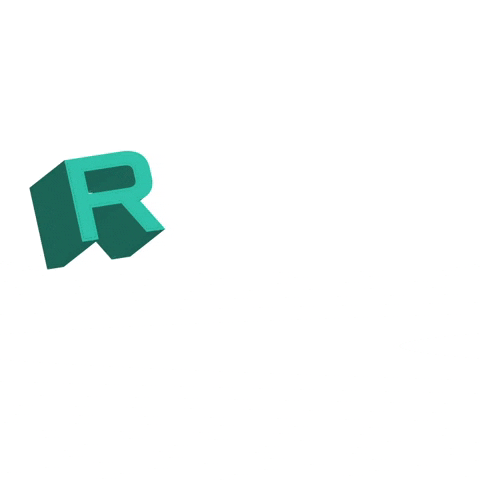by olya green
A.I. is sort of a peanut butter you can spread across [multiple industries]. With a precise idea of the conditions this thing I’m designing will see in real life, I can design it better.
Design thinking in the machine age
Over the past decades, mostly thanks to design thinking advocates, designers have emerged to take over all sorts of managerial roles at quite a few Big Tech players. At the same time, the advent of machine learning didn’t succeed in challenging the design trade per se. Or did it? When artificial intelligence is taking over every other industry at such a sweeping pace, there is an array of questions lingering in design and tech communities alike. How do we tame the machines to produce compelling graphics able to induce human emotion and thought? How do we restrain engineering teams from feeding the AI-design units with amateur / bad-taste data? Will the exquisite Adobe software finally evolve into robotic tools taking over a human hand entirely? Feelings and thought are very mixed right now, so let me reserve a piece of personal stance in this blog.
Ai-Da: the first ever robot artist who can draw without any human input.
Ditching human designers?
In the mid last century, probably the most celebrated commercial designer of the time, Sir Paul Rand, noticed that the majority of ‘professionals’ in ads business are
‘...not even discriminating enough to distinguish between good and bad, between trendy and original, nor can they always recognize talent or specialized skills. In the field of design theirs is the dichotomy of being privileged but not necessarily being qualified — after all, design is not their business’.
Some fifty years in, and the situation has aggravated immensely. The abundance of tools and assets available online is truly striking giving everyone with basic Photoshop skills a chance to create graphics of more often than not dubious quality. Ditch the years of design training / self-learning - all you need is a MacBook and Adobe Suite (side note - you’d better get a Wacom tablet, too).
Now, with robo-designers this gap in essential design education will get completely out of hand. On the flip-side though, machines have to be heavily trained, and preferably by top-notch designers to make sure the output is adequate. Sounds like a pricey endeavour to me, however, it still can be an alternate career pathway for graphic design graduates, and consolation to those thinking that humans will be kicked out of the profession entirely. I do believe that this sort of facilitator / teacher role can prove to be most viable, if not exciting, for evolving artistic trades. Collaborating and sharing knowledge while building ML tools - I’m down for that.
AI tools - designers’ little helpers
In the wake of the recent news of the world’s first machine-artist, a reasonable angle to look at AI is as another tool for artists, like a camera, or a drum machine. Creators are adept to playing with devices and all sorts of collaboration, which is a great way to get those creative juices flowing, ain’t it so?
More so, with AI extensively taking over the niche of affordable freebee design-tools, it seems logical to exploit a ‘little helper’ further to speed up the flow and automate some tedious tasks like preparing, sorting or unifying design assets. Because no one likes to spend hours cropping / retouching hundreds of jpegs. From creating instant pattern variations and legit UI tools to pretty basic logo generators; to more exquisite design tools like Adobe Sensei and Intelligent Alerts - all these are great time savers loved by designers and businesses. Robotic intelligence is also a great way to help make design decisions by bringing complex data analytics to the table, so that we iterate faster and consider multiple options, otherwise not available to a human eye.
What’s inherently wrong with AI design-generators?
Well, to my mind, they’re entirely missing the ‘metaphor-behind-the-design point. And if a task of exerting any meaningful emotion resonating with the human audience seems quite plausible for the robo-designers of today, that of designing, say, a poster in a way to elicit the ‘close the Gestalt’ from a human brain will hardly ever be. And of course there is barely a machine (at least, for now) capable of constructing a logo that would satisfy this timeless criterion by Sir Paul Rand: ‘A logo is less important than the product it signifies; what it means is more important than what it looks like’.
Here’s another peril inferred by placing human bias and design illiteracy into machine brain. Design amateurs should steer clear, and it’s the responsibility of forward-thinking design community to rely on high-class design educators when feeding artistic data to robobrain. ‘Lack of humility and originality … the absence of restraint, the equation of simplicity with shallowness, complexity with depth of understanding, and obscurity with innovation, distinguishes the quality of work of these times’, - applied to our new realia means ‘do not let engineers with bad taste ever approach a machine.
Cam robodesigners be that exquisite?
More complex AI solutions are still pricey, so the majority of design newbies hoping to get an exceptional result with the help of ‘advanced tech’ still have access only to basic online generators. My fellow designers, of course, noticed how basic and shallow Logobank graphics is. You throw in some yellows and bananas, and it spits out a perfectly aligned ‘Juice Bar’ in a yellow circle shape logo. Come on, we all know that first-level associations never work in design! Yet, it is actually one of the best logo-generators out there.
Fancy the AirBnb logo redesigned by a machine
Sounds dodgy, no? It is human talent that will be in charge of designing machines and machine learning applications, while others will make use of advanced Photoshop and Illustrator tools to cut down the tiresome work. Over the time, machines will surely learn design principles and techniques, but can they learn human emotion? According to A.I. Superpowers: China, Silicon Valley, and the New World Order, one thing the machines can’t do is ‘building empathy, compassion, and trust—all of which require human-to-human connection’. Aren’t those the core criteria for a meaningful design? And only humans can make a product that serves its customer in a thoughtful way. As Paul Rand aptly puts it:
‘Design can help inform, delight, and even persuade — assuming that the designer is an artist and not just someone focused on the nonsense of “self-expression” or on the fads of the moment. ... good design is not the product of market research, but of natural talent’.





